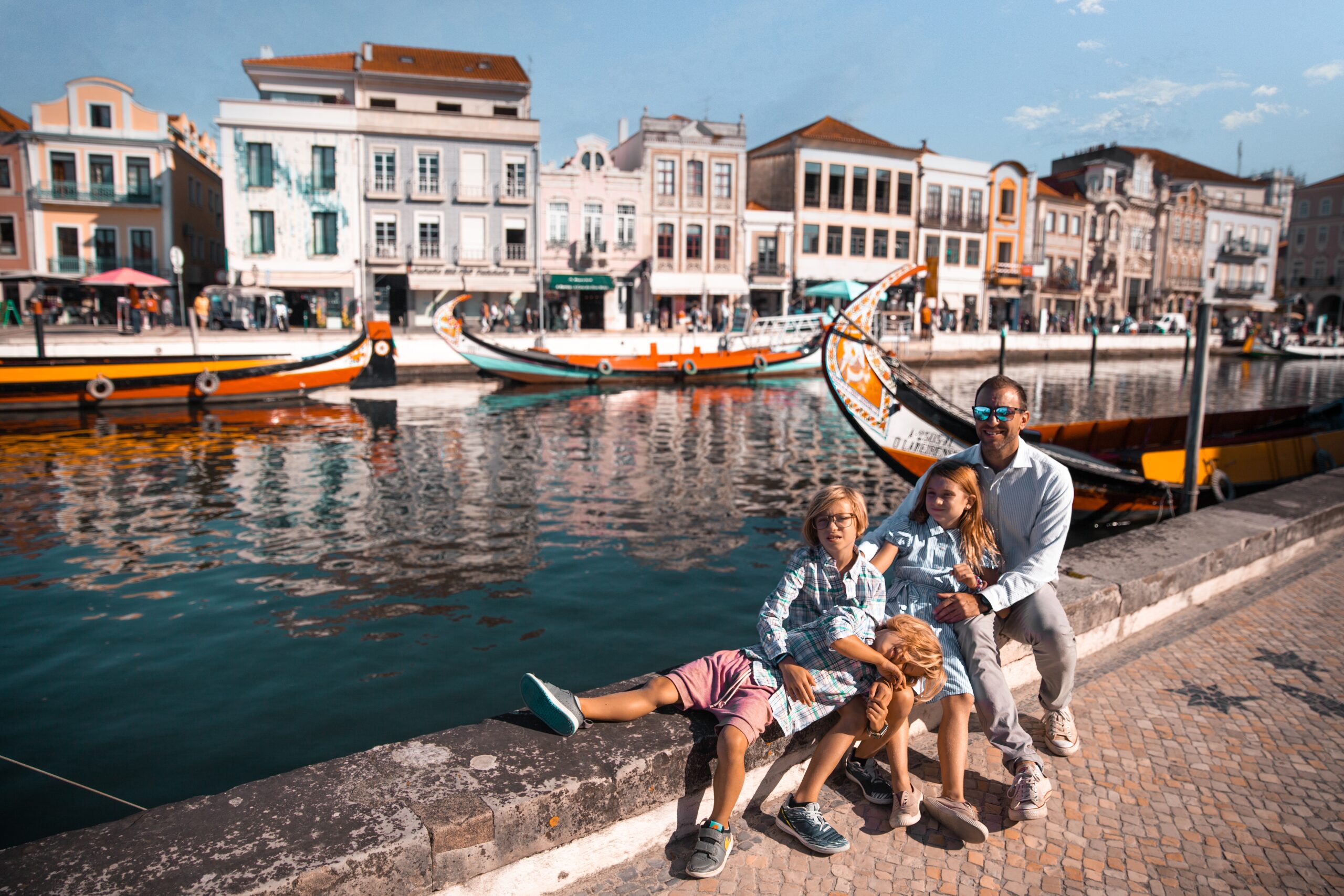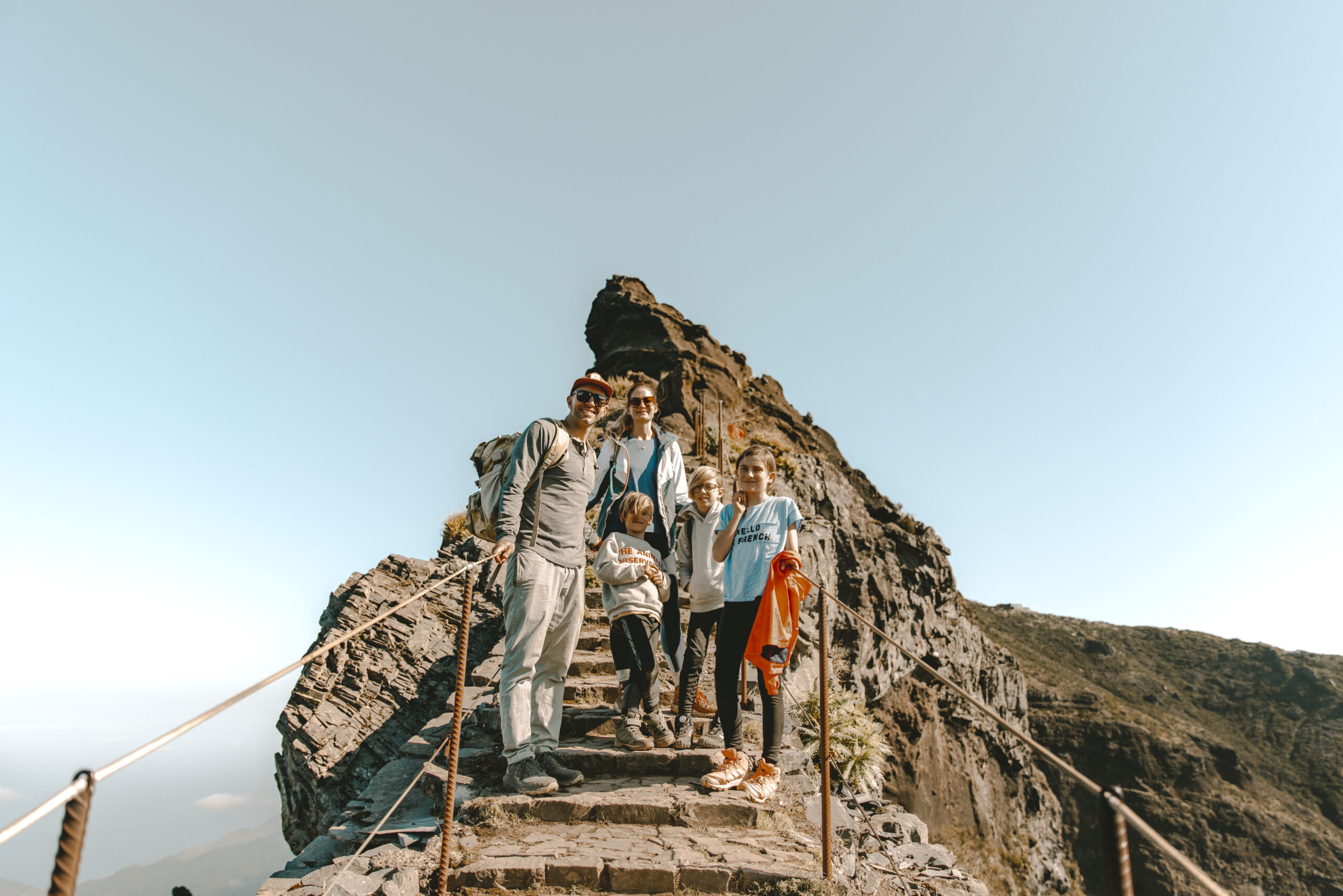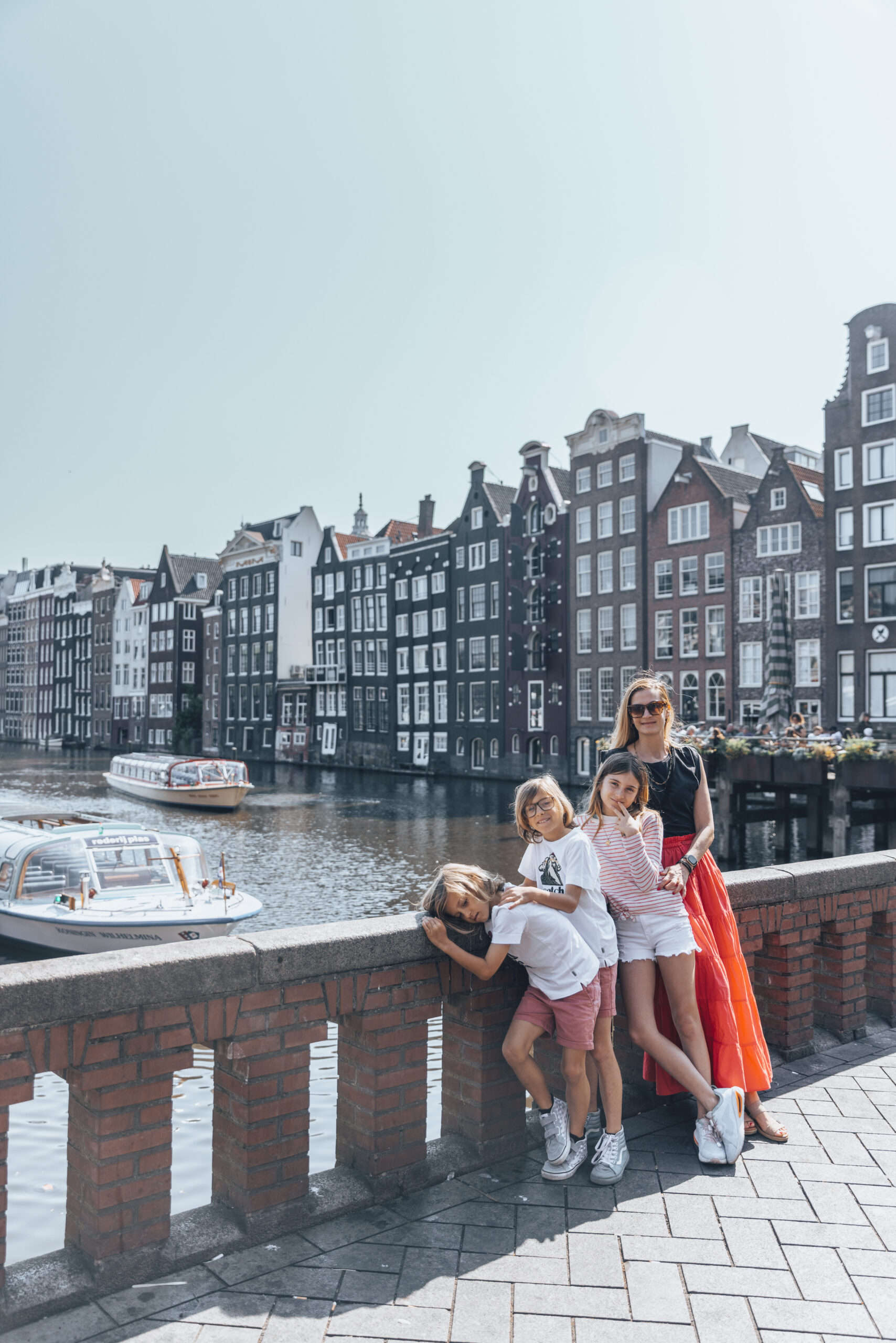Why Spain is a great place for kids
Choosing the city that's right for you
Choosing the visa that's right for you
More than just great weather
Why Spain provides a better quality of life

How we Plan

What we pack
Choosing Travel Insurance
Book Your Hotel
with Booking.com
Book Your Car
with RentalCars.com
Book Your Flight
with Skyscanner.com
Book Your Tour
with GetYourGuide.com

Our Camera Gear

How We Fly
Choosing Your Destination
Family Guide to the...
Netherlands
Netherlands, where charming windmills, historic canals, and vibrant tulip fields invite travelers to discover a land of timeless beauty, rich culture, and innovative spirit, where iconic cities like Amsterdam, Utrecht, and Rotterdam offer a blend of historic charm and modern allure amidst the tranquil countryside and bustling cityscapes of this enchanting European destination.
Map
Weather
Itineraries

Coming Soon...
Amsterdam
Top Five Restaurants in Amsterdam
Located on the 23rd floor of the Okura Hotel, Ciel Bleu offers a panoramic view of Amsterdam. This two-Michelin-starred restaurant is renowned for its sophisticated French cuisine with Japanese influences. Their tasting menu, paired with exquisite wines, promises a memorable dining experience.
Situated in a set of greenhouses dating back to 1926, De Kas focuses on farm-to-table dining. The restaurant grows its own vegetables and herbs, ensuring the freshest ingredients for their Mediterranean-inspired dishes. De Kas offers a unique dining experience in a beautiful and sustainable setting.
Restaurant Breda provides a relaxed yet refined dining experience. Their seasonal menu, featuring modern European cuisine, is crafted with locally sourced ingredients. The tasting menus are designed to offer a journey through the best of Dutch flavors, paired with carefully selected wines.
Housed in a historical building, The Duchess exudes a sense of grandeur and elegance. The restaurant’s menu is inspired by the light and refined flavors of Southern France and Italy. Their high tea is particularly popular, offering a luxurious and decadent experience.
Senses Restaurant is known for its innovative approach to fine dining. With a focus on sensory experiences, their dishes are designed to surprise and delight. The open kitchen allows diners to observe the meticulous preparation of each course, enhancing the overall experience.
Top Five HotelS in Amsterdam
Pulitzer Amsterdam is a unique hotel composed of 25 restored canal houses from the 17th and 18th centuries. It offers a blend of traditional Dutch elegance and contemporary style, with picturesque views of the canals. The hotel is located in the heart of the city, close to major attractions like Anne Frank House and the Royal Palace.
Located along the Herengracht canal, Waldorf Astoria Amsterdam is a luxurious hotel housed in six historic canal palaces. The hotel features elegant rooms, a tranquil garden, and a world-class spa. Guests can enjoy fine dining at the two-Michelin-starred restaurant, Spectrum.
The Dylan Amsterdam is a boutique hotel offering a sophisticated and intimate experience. Situated on the Keizersgracht canal, the hotel combines historic charm with modern amenities. It features a Michelin-starred restaurant, Vinkeles, and beautifully designed rooms and suites.
The Conservatorium Hotel is a five-star luxury hotel located in the Museum District, close to the Van Gogh Museum and the Rijksmuseum. The hotel boasts a stunning blend of modern design and historic architecture. It offers luxurious rooms, an acclaimed restaurant, and a state-of-the-art spa.
Situated on Dam Square, NH Collection Amsterdam Grand Hotel Krasnapolsky offers a prime location and stunning views of the Royal Palace. This historic hotel combines classic elegance with modern comforts. Guests can enjoy a variety of dining options, including the Michelin-starred restaurant, The White Room.
FAQ's
What are the main things to do with kids in Netherlands?
The Netherlands offers a wide range of activities and attractions for families with children. Here are some of the main things to do with kids in the Netherlands:
1. Visit theme parks like Efteling, Duinrell, or Madurodam (a miniature park showcasing Dutch landmarks).
2. Explore the many interactive museums, such as NEMO Science Museum in Amsterdam or the Railway Museum in Utrecht.
3. Enjoy the beaches along the North Sea coast, particularly in the summer months.
4. Visit zoos and animal parks, such as Artis Zoo in Amsterdam, Blijdorp Zoo in Rotterdam, or Apenheul Primate Park in Apeldoorn.
5. Take a bike tour through the Dutch countryside or cities, as the Netherlands is known for its excellent cycling infrastructure.
6. Visit the famous Keukenhof Gardens in Lisse during spring to see the vibrant tulip displays.
7. Explore the historic city centers of Amsterdam, Utrecht, or Maastricht, which offer a mix of culture, architecture, and child-friendly activities.
8. Visit a cheese farm or wooden shoe factory to learn about traditional Dutch crafts.
9. Attend festivals and events that cater to children, such as the Sinterklaas celebration in December or King’s Day in April.
10. Spend a day at a water park, such as Tikibad in Wassenaar or Aqua Mundo in Center Parcs holiday parks.
These are just a few examples, as the Netherlands has many more child-friendly activities and attractions to offer.
What is Netherlands famous for?
The Netherlands is famous for a variety of things, including:
1. Tulips: The Netherlands is renowned for its vibrant tulip fields and is the world’s largest producer and exporter of tulips.
2. Windmills: Historic windmills are an iconic symbol of the Dutch landscape and have played a significant role in water management and agriculture.
3. Canals: Dutch cities like Amsterdam, Utrecht, and Delft are known for their picturesque canal networks, which are used for transportation and recreation.
4. Cycling culture: The Netherlands has an extensive cycling infrastructure and a strong cycling culture, with many people using bikes as their primary mode of transportation.
5. Art and artists: Dutch artists like Rembrandt, Johannes Vermeer, and Vincent van Gogh have made significant contributions to art history.
6. Cheese: The Netherlands is famous for its cheese production, particularly Gouda and Edam varieties.
7. Architecture: Dutch architecture is known for its innovative and modern designs, as well as historic buildings like the Rijksmuseum and the Anne Frank House.
8. Water management: As a low-lying country, the Netherlands is famous for its advanced water management systems, including the Delta Works project.
9. Tolerance and progressiveness: The Netherlands is known for its liberal policies on social issues and its tolerant, progressive society.
10. Dutch language: Dutch is the official language of the Netherlands and is also spoken in parts of Belgium and the Caribbean.
These are just a few examples of what the Netherlands is famous for, as the country has a rich history, culture, and tradition that extends beyond this list.
What power plug type does Netherlands use?
The Netherlands uses Type C and Type F power plugs and sockets.
Type C: This is the standard European plug, also known as the Euro plug. It has two round pins and is used in most European countries. The sockets are designed to accept Type C and Type F plugs.
Type F: Also known as the “Schuko” plug, this type is compatible with Type C sockets. It has two round pins and two earth clips on the side. This plug is also commonly used in many European countries, including Germany, Austria, and Sweden.
Both plugs and sockets operate on a voltage of 230V and a frequency of 50Hz.
If you are traveling to the Netherlands from a country that uses a different type of plug, you will need a travel adapter to charge your electronic devices. It’s important to note that some devices, like hair dryers or electric shavers, might also require a voltage converter if they are not designed for 230V.
Is Netherlands safe?
Yes, the Netherlands is generally considered a very safe country. According to the 2021 Global Peace Index, the Netherlands ranks 21st out of 163 countries, indicating a high level of safety and stability.
Some factors contributing to the Netherlands’ safety include:
1. Low crime rates: The Netherlands has relatively low levels of violent crime and theft compared to many other countries.
2. Effective law enforcement: Dutch police are known for being professional, reliable, and responsive to public safety concerns.
3. Political and social stability: The Netherlands has a stable political system and a strong social safety net, which helps maintain a peaceful society.
4. Safe transportation: Dutch public transportation is considered safe and efficient, and the country’s infrastructure is well-maintained.
5. High standard of living: The Netherlands has a high standard of living, with good access to healthcare, education, and social services, which contributes to overall safety and well-being.
However, as with any country, it’s important to exercise normal precautions, such as being aware of your surroundings, securing your belongings, and avoiding unsafe areas, particularly at night. Petty crimes like pickpocketing can occur in tourist areas, so it’s wise to stay vigilant. Overall, though, the Netherlands is a safe destination for both residents and visitors.
What do i need to travel to Netherlands?
To travel to the Netherlands, you’ll need to consider the following:
1. Passport: You must have a valid passport with at least six months of remaining validity from your planned return date.
2. Visa: Depending on your nationality and the purpose of your visit, you may need a visa. Citizens of the EU, EEA, Switzerland, and several other countries can enter the Netherlands without a visa for short stays (usually up to 90 days). Check with the Dutch embassy or consulate in your country for specific visa requirements.
3. Accommodation: Book your accommodation in advance, especially during peak travel seasons.
4. Transportation: Consider how you will travel to and within the Netherlands. Book flights, train tickets, or rental cars as needed.
5. Travel insurance: It’s advisable to have comprehensive travel insurance that covers medical emergencies, trip cancellations, and other unforeseen events.
6. Money: Carry some cash (euros) and a credit or debit card for expenses. Inform your bank about your travel plans to avoid any issues with international transactions.
7. Electrical adapters: The Netherlands uses Type C and Type F plugs, so bring appropriate adapters if needed.
8. Language: While many Dutch people speak English, it’s helpful to learn some basic Dutch phrases.
9. Weather-appropriate clothing: Check the weather forecast for your travel dates and pack accordingly. The Netherlands can experience cool, damp weather, especially outside of the summer months.
10. COVID-19 precautions: Check the latest entry requirements, such as proof of vaccination, testing, or quarantine, before your trip.
Remember to check the most up-to-date information before your trip, as travel requirements can change over time.
What is the best way to travel in the Netherlands?
The best way to travel within the Netherlands depends on your preferences and the destinations you plan to visit. However, the country offers several convenient and efficient transportation options:
1. Bicycles: Cycling is a popular and practical way to get around Dutch cities, as the country has an extensive network of bike lanes and a flat landscape. Many cities have bike-sharing programs and rental shops.
2. Trains: The Netherlands has an efficient and reliable train network operated by Nederlandse Spoorwegen (NS). Trains connect major cities and towns, making it easy to travel between destinations. The OV-chipkaart is a smart card that can be used on trains and other public transport.
3. Buses: Buses are useful for shorter distances and for reaching areas not covered by the train network. Most cities have their own bus networks, and regional buses connect smaller towns and villages.
4. Trams and metros: In larger cities like Amsterdam, Rotterdam, and The Hague, trams and metros provide convenient transportation within the city.
5. Ferries: Ferries are used to cross rivers and waterways, especially in the southwestern province of Zeeland and in the north of the country, where the Wadden Islands are located.
6. Cars: Renting a car can be a good option if you plan to visit more remote areas or prefer a more flexible itinerary. However, keep in mind that parking can be expensive and limited in city centers, and traffic can be heavy during peak times.
7. Walking: Many Dutch cities are compact and pedestrian-friendly, making walking a pleasant way to explore local attractions and neighborhoods.
Overall, the combination of trains and bicycles is often considered the best way to experience the Netherlands, as it allows you to efficiently travel between cities while also having the flexibility to explore each destination at your own pace.
What documents do i need to travel to Netherlands?
The documents you need to travel to the Netherlands depend on your country of origin, the purpose of your visit, and the length of your stay. However, here are the general documents required:
1. Valid Passport: You must have a passport that is valid for at least six months beyond your intended stay in the Netherlands.
2. Visa (if required): Depending on your nationality and the purpose of your visit, you may need a visa to enter the Netherlands. Citizens of the EU, EEA, Switzerland, and several other countries can enter the Netherlands without a visa for short stays (usually up to 90 days). For other nationalities or longer stays, you may need a Schengen visa or a specific visa for the Netherlands.
3. Proof of accommodation: You may need to provide proof of your accommodation, such as a hotel reservation or a letter of invitation from a host in the Netherlands.
4. Proof of sufficient funds: You may be asked to prove that you have enough money to support yourself during your stay in the Netherlands.
5. Travel insurance: While not always mandatory, it’s highly recommended to have comprehensive travel insurance that covers medical emergencies, trip cancellations, and other unforeseen events.
6. Return or onward ticket: Border officials may ask to see proof of your return or onward journey from the Netherlands.
7. Supporting documents: Depending on the purpose of your visit (e.g., business, study, or work), you may need additional documents such as a letter of invitation, a work permit, or proof of enrollment in a Dutch educational institution.
Always check with the Dutch embassy or consulate in your country for the most up-to-date and specific information on the documents needed for your travel to the Netherlands.
Where to travel in the Netherlands?
The Netherlands offers a variety of destinations for different interests. Some popular places to visit include:
1. Amsterdam: The capital city is famous for its canals, museums (such as the Rijksmuseum and Van Gogh Museum), historic architecture, and vibrant nightlife.
2. Rotterdam: This modern city is known for its innovative architecture, bustling port, and cultural diversity. Don’t miss the famous Cube Houses and the Markthal.
3. The Hague: The seat of the Dutch government and home to the International Court of Justice, The Hague is known for its historic buildings, museums, and nearby coastal resorts like Scheveningen.
4. Utrecht: This charming university town has a historic city center with medieval churches, canals, and the iconic Dom Tower.
5. Keukenhof Gardens: Open from mid-March to mid-May, these expansive gardens in Lisse showcase millions of colorful tulips and other flowers.
6. Kinderdijk: This UNESCO World Heritage site is home to a collection of 19 picturesque windmills from the 18th century.
7. Maastricht: Located in the south of the Netherlands, Maastricht is known for its medieval architecture, vibrant cultural scene, and excellent cuisine.
8. Delft: This historic town is famous for its iconic blue and white pottery, as well as its association with the painter Johannes Vermeer.
9. Hoge Veluwe National Park: The largest national park in the Netherlands offers a chance to enjoy nature, wildlife, and outdoor activities like cycling and hiking.
10. The Wadden Islands: This chain of islands in the north of the Netherlands is known for its natural beauty, unique ecosystems, and opportunities for water sports and outdoor activities.
These are just a few examples, as the Netherlands has many more cities, towns, and attractions worth visiting depending on your interests and the length of your stay.

